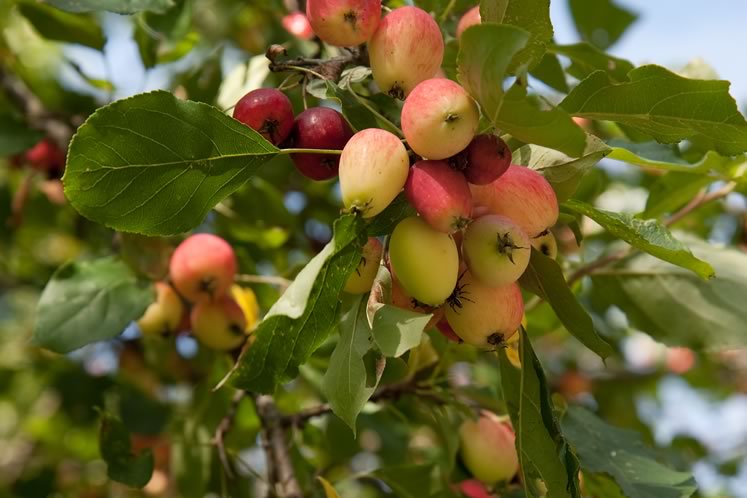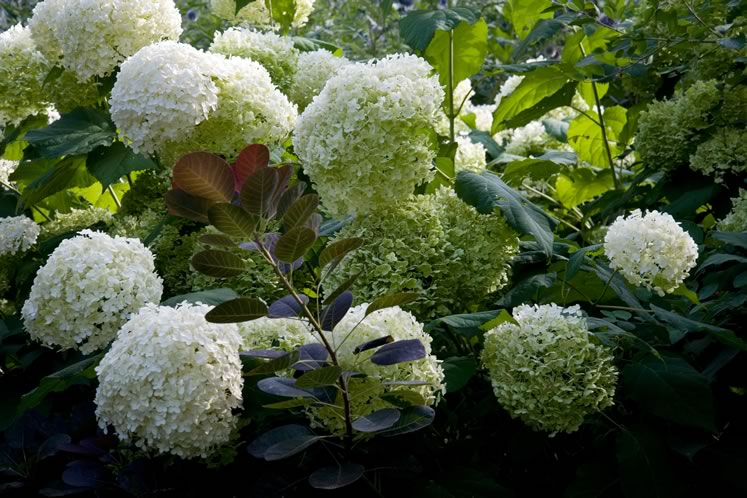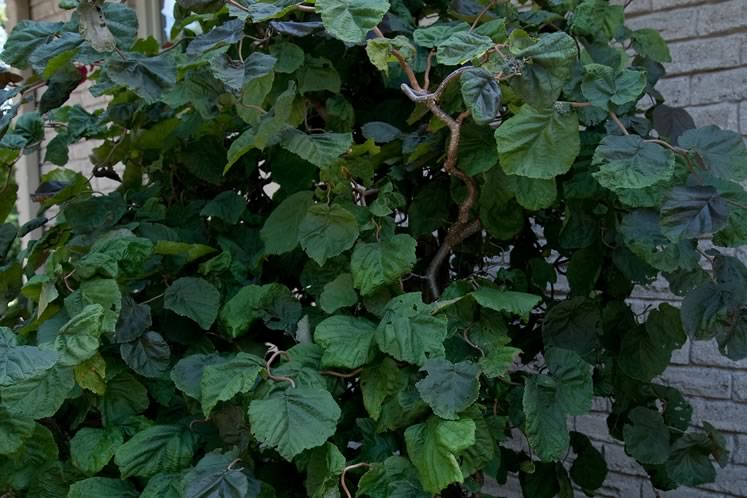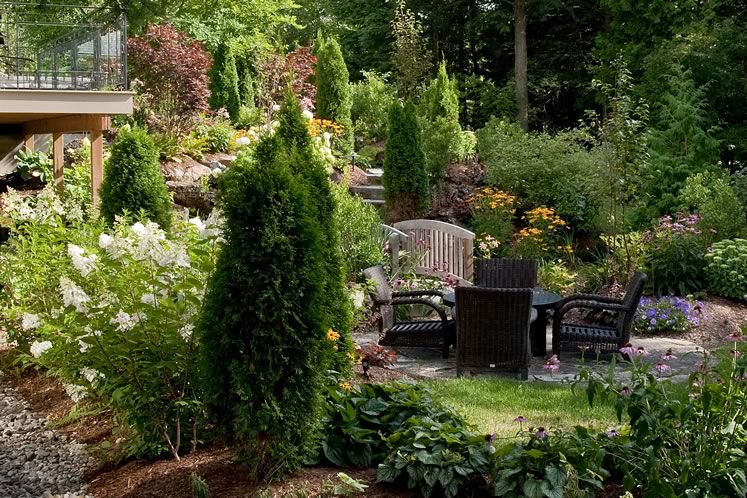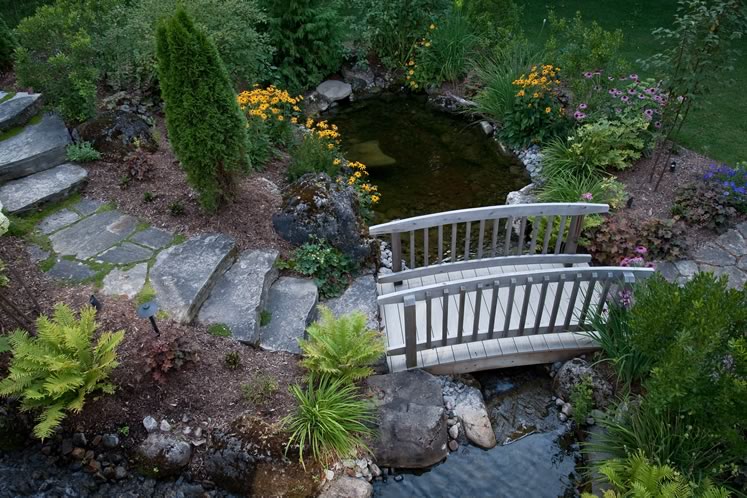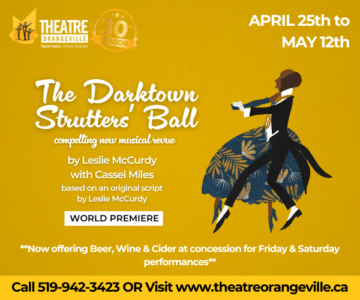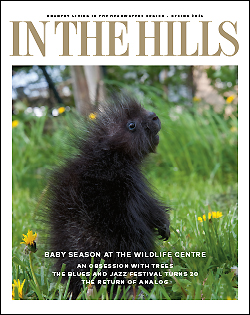5 Expert Picks for a Year-Round Garden
Hydrangeas, conifers and ornamental shrubs are key to creating a year-round garden full of texture, colour and shape.
If you’ve never gazed in awe at a cluster of bright red winterberries against a clear blue fall sky, or a dusting of snow on a dried hydrangea bloom, it’s time to consider adding a few hardy role players to your garden. From ornamental shrubs and grasses to classic conifers, these stalwarts provide shape, dimension – and even colour – long after perennials and annuals have faded in the fall.
It’s easy to stretch your gardening calendar to make room for such pleasures, says Cheri Janknegt, horticulturist and garden maintenance manager at Tumber Landscape Design & Build in Orangeville.
When designing a year-round space, Cheri says she imagines what it will look like when the snow flies. “If you see trees, berries and beautiful grasses, it’s still a landscape you appreciate. There’s still life there.”
Here are the top five plant categories Cheri leans on when planning a garden to love all year.
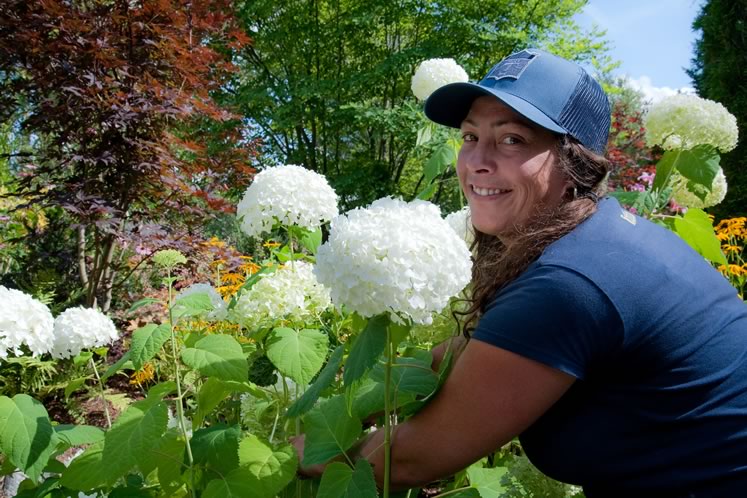
Horticulturalist Cheri Janknegt of Tumber Landscape Design & Build recommends hydrangea for year-round interest in the garden. Photo by Rosemary Hasner / Black Dog Creative Arts.
Hydrangea
This classic deciduous shrub known for its large flower heads comes in a wide range of varieties with built-in fall and winter interest. Cheri’s fond of the classic white mopheads of the Annabelle variety. Most hydrangea blooms fade to a beautiful golden-brown colour – and look like sculptures as snow accumulates. Plant them in groups of three, five or seven for that wow factor.
Pro tip: If you have a variety that grows fast and blooms on new wood, don’t prune them back too hard. “You want to leave a strong base,” Cheri says. “Weak shoots can’t support blooms well and will flop over.”
Fruit-bearing trees and shrubs
Planned right your garden can bear blossoms and fruit all year long. Serviceberry’s plum-coloured berries appear in summer. Apples and pears ripen in late summer or early fall. Cheri also loves the look of the beautyberry, which grows to four or five feet tall. (If you live in the north end of Headwaters, consider a sheltered area for planting your first, she notes.) In the summer it puts out green-pink blossoms, then in the winter its berry clusters turn deep purple. “They add colour and a sense of liveliness to the duller and dreary days of late fall and winter.”
Pro tip: Beautyberry, dogwood and others are perfect for winter table arrangements – if you can beat the birds and squirrels to them.
Coniferous trees and shrubs
Cedars, pines, spruce, and hemlocks stand guard year-round as green architectural elements in a garden. Cheri says they’re best stationed off a front walkway or entrance, or to anchor the corner of your home and connect it to the surrounding landscape. In the winter they add extra texture and shape as branches build up with frost and snow.
Pro tip: Get the best of both the berry and evergreen worlds, and consider a Canada yew. “It’s a rich green – and it has red berries in the winter,” says Cheri.
Ornamental shrubs
Each of Cheri’s most beloved ornamental shrubs has its own shtick like the blurry, puffy plumes of the maroon-coloured smoke bush or the deep red berries and leaves of the sumac. But her heart belongs to the contorted hazelnut, aka Harry Lauder’s Walking Stick (reportedly named for a Scottish entertainer known for his love of walking sticks), with its wonky, spiral branches and cascading yellow catkins. Come winter, you’ll have a dramatic, moody focal point of gnarly bark to contemplate.
Pro tip: If you follow Cheri’s lead, you’ll need to learn how to prune your hazelnut. If it’s a grafted plant, remove suckers to maintain its shape.
Ornamental grasses
Despite their willowy nature reed, fountain and maiden grasses can stand up well past summer. Play around with varieties including zebra grass and purple fountain grass. Cheri says she advises Tumber clients to try grasses as a clever, low-cost way to cover propane tanks, hydro meters or fences in need of repair.
Pro tip: Come spring prune hard. Watch for nesting critters like voles and moles, then clear out all the old, mushy plant matter. “It should look like the top of a hamburger bun, nicely rounded.”
For more information visit tumber.ca
This article was created in partnership with Tumber Landscape Design & Build.
Related Stories
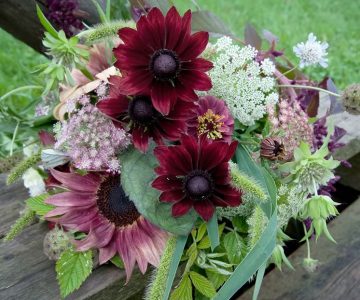
Life at a Flower Farm
Mar 19, 2019 | | FarmingMeet the women behind the blooms at Petals Flower Co., Purple Hill Lavender Farm, Stonewell Farm, Broadside Flowers and Caledon Hills Peony Farm.

A Purposeful Garden
Mar 23, 2015 | | LeisureMisha Dubbeld’s gracious Mono garden is a testament to 20 years of love and labour. With all that she’s learned, her latest project is conceived on a grand scale.
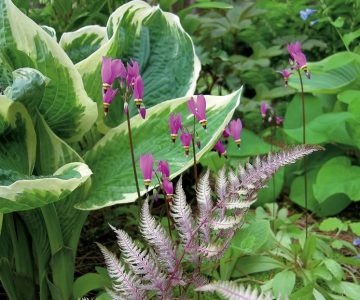
Matches Made in Heaven
Mar 21, 2016 | | LeisureHow Lorraine Roberts conjures up dreamy landscapes using colour, shape – and an appetite for surprise.
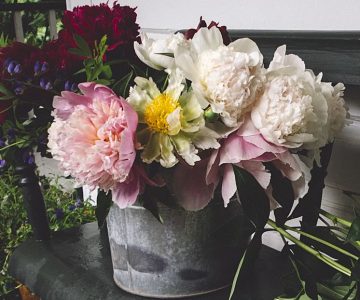
The Peony Pro: Caledon Hills Peony Farm
Mar 19, 2019 | | FarmingLooking for a rare peony variety? Diana Hillman’s got you covered with rootstock from North America and the Netherlands.

